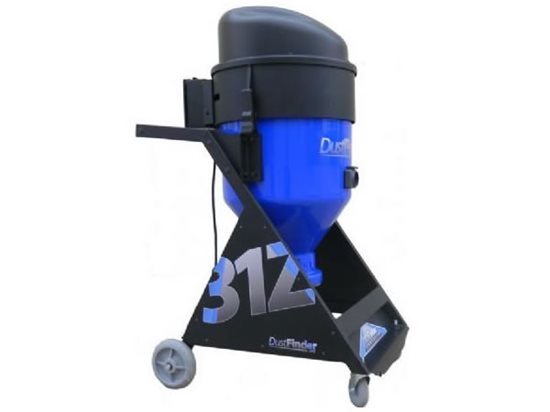- Concrete Polishing Equipment
- Get the Look - Polished Concrete Pictures
- How to Polish Concrete: Learn the basics and get a step-by-step overview
- Polished Concrete Preparation: How to clean, repair, and evaluate before polishing
- Concrete Polishing vs. Resurfacing
- Reviews of Concrete Polishing Equipment How to clean, repair, and evaluate the condition of concrete floors before polishing
- Tips on Using Polishing and Grinding Equipment
- Tips for Choosing Edge Grinders
- Selecting Dust-Collection Equipment
- Diamond Tooling: Tips for choosing the right type of diamond tooling and equipment
- Concrete Densifiers: An introduction to chemical hardeners and how they work to improve polished concrete
- 2023 Polishing Techniques: An online interview series featuring Bob Harris
Dust-Collection Equipment for Concrete Polishing
The key features to look for when selecting the best system for your needsAlthough you can polish concrete floors or countertops using either wet or dry methods (see Wet vs. Dry Concrete Polishing), the trend today is to go dry. Not only is this method faster and more convenient, it doesn’t leave behind the messy slurry that wet polishing creates. Polishing dry, however, does generate a lot of dust, which makes the use of dust-control equipment mandatory to keep the concrete fines from going airborne.
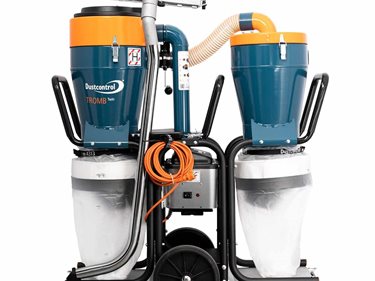
DustControl DC Tromb Twin 400L 110V Commercial Vacuum
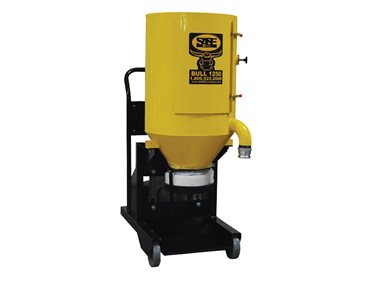
BULL 1250 EBS
Safety and air quality are the main purposes for dust-collection systems, but keeping enough dust off the floor so that contractors can see the scratch pattern as they grind is also important, says Clark Branum of Diamatic USA. Most grinders for polishing concrete floors don’t come equipped with an integral dust collection system, which means you’ll have to purchase a separate unit. Some manufacturers will sell dust extractors specifically for use with their machines. But if that’s not the case, you’ll have to shop around on your own. Here are some tips from Branum for the key features to look for.
How is the dust collected?How the dust is collected -- in a tank or in a bag - is a consideration when it comes to disposal. Branum says the Longopac (a continuous bag system) is the most convenient for clean one-step disposal vs. a standard dust tank, which will require you to empty and dispose of the contents separately. However, if you prefer to go with a dust tank, he recommends a capacity of no more than 50 pounds for floor polishing applications to allow for easier disposal. A larger tank will become too heavy for one person to empty.
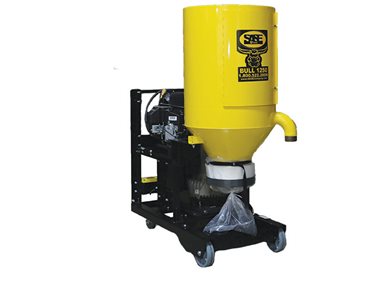
BULL 1250PRO
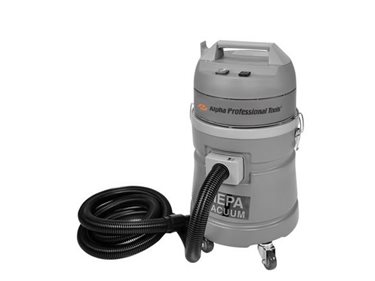
A countertop vacuum from Alpha Professional Tools.
Handheld grinders for concrete countertops will generally come with a dust-collection bag and a shroud surrounding the cup-wheel to suction the airborne dust created during the grinding process. The dust that is collected can then be disposed of separately.
What type of filtering system does it use?Most dust extractors have the capacity of capturing 99% of any airborne dust particulate. But you should also look at the type of filtering system the machine uses. Branum says that HEPA-type (high-efficiency particulate air) filters are being specified more often than in the past, and certain projects require the use of HEPA filters exclusively. Most manufacturers offer HEPA filters as options for their systems. Regardless of the filter type, look for a filter housing that’s readily accessible so the filter will be easy to replace.
What are the power requirements?The power requirements of the dust collector are another important consideration. Often it’s good practice to match the voltage of the collector to the grinder being used, says Branum. “Some machines run on 230-volt three-phase, while others run on 480-volt three-phase power. It's smart to run all of your equipment at the same voltage so problems are less likely to occur in the field,” he says. Some manufacturers offer power-pass through options so the contractor can run his grinder directly from the vacuum. This eliminates having to run two separate power cables a long distance.
How efficient is the machine?The airflow rate of the dust collector, measured in cubic feet per minute (CFM), is a good gauge of its efficiency. A high CFM rating is definitely a plus, according to Branum. These rates will vary, depending on the size of the machine, with larger units providing greater airflow capacities. “Large production machines generate a lot of dust, so the CFM of the system has to be able to keep up. Smaller grinders and polishers can have lower CFM airflows. Some manufacturers rate their systems with a 2-inch hose connection and some with a 3-inch connection, so it really depends on the demand of the grinding equipment. A high CFM allows you to run longer hose lengths and still have effective dust collection,” he says.
Related resources:Checklist of Polishing Equipment & Supply Needs
 Polishing Diamonds
Options for hard, medium, and soft concrete.
Polishing Diamonds
Options for hard, medium, and soft concrete.
 CPS G-170 Electric
17" Floor Grinder 230 volt ($7,600)
CPS G-170 Electric
17" Floor Grinder 230 volt ($7,600)
 Propane Concrete Polisher
Concrete Polishing HQ
Propane Concrete Polisher
Concrete Polishing HQ
 Scanmaskin Diamond Tools
A wide variety of different sizes and hardness
Scanmaskin Diamond Tools
A wide variety of different sizes and hardness
 Lythic Densifier XL
1 Gallon & 5 Gallon sizes
Lythic Densifier XL
1 Gallon & 5 Gallon sizes
